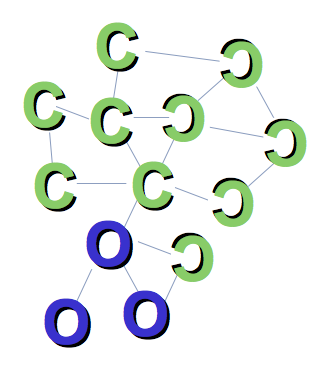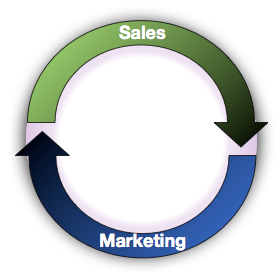 It is exciting to see widening recognition that brand survival depends on improving the lives of customers, not merely “pushing product” as they are accustomed to doing. In the latest example, Business Should Focus on Sociality, Not Social “Media”, Umair Haque offered a case for the end of social media and the disruption of many Industrial Economy structures, namely the social contract. It is exciting to see widening recognition that brand survival depends on improving the lives of customers, not merely “pushing product” as they are accustomed to doing. In the latest example, Business Should Focus on Sociality, Not Social “Media”, Umair Haque offered a case for the end of social media and the disruption of many Industrial Economy structures, namely the social contract.
As regular readers well know, I agree with Haque’s key thesis, that brands need to jettison their legacy focus on products/services in favor of dedicating themselves to helping users achieve outcomes while using their products. I have often written that humans and their organizations will have to adopt a more collaborative and responsible attitude and approach in general. However, I don’t agree with him that there’s only one way to do “sociality” as he implies by his assertion that brands have an “existential responsibility” to “the art of living.” Here I’ll explain the differences, which will help brand stewards understand the nuances of brands’ disruption.
[…]
It’s nice to see dawning recognition that social business needs some structure and planning to produce business value, and this post from SocialMouths offers a quick treatment. It presents 5-part approach to generating leads: start with strategy, conduct due diligence, connect content to prime stakeholders, connect social media to marketing, and involve the sales team. […] […]
 ZDNet reports on “research” that finds that websites provide 7 times more sales leads than “social media.” Unfortunately, the writer doesn’t appreciate the self-irony in the second paragraph: “A company’s corporate website was found to be the top source of new sales leads online — second only to personal referrals..” ZDNet reports on “research” that finds that websites provide 7 times more sales leads than “social media.” Unfortunately, the writer doesn’t appreciate the self-irony in the second paragraph: “A company’s corporate website was found to be the top source of new sales leads online — second only to personal referrals..”
As B2B continues to adopt social business, more word of mouth, i.e. personal referrals, happens online. Another reason I’m calling out this post is that it misinforms readers by treating “sales leads” as a homogeneous category. Our clients don’t care about general adoption; what’s more relevant is adoption by their prospects. This post treats all leads as the same, so it’s really the equivalent of informational fast food.
To end on a dour note, misinformation can work to your advantage because your rivals may read it and believe while you can see through it, invest and pull ahead.
Customer Service Is the New Marketing shows how CMOs can leverage digital world of mouth by leading teams to serve people publicly.
 In most brand organizations, marketing investments rest on 20th century marketing principles whose results are diminishing every year. At the same time, an increasing portion of products and services are commoditizing, which puts more pressure on marketing to “create” differentiation and value. In many cases, there is no escape—except by changing the rules. Here I’ll show how marketing can reinvent itself by using social business to tap a hidden gold mine. In most brand organizations, marketing investments rest on 20th century marketing principles whose results are diminishing every year. At the same time, an increasing portion of products and services are commoditizing, which puts more pressure on marketing to “create” differentiation and value. In many cases, there is no escape—except by changing the rules. Here I’ll show how marketing can reinvent itself by using social business to tap a hidden gold mine.
The Threat: Dire Straits in Marketing
Marketing as a profession emerged in leading economies during the mid 20th century, when manufactured products were novelties in many categories. Marketers came to assume that they could “create an image” or “brand” using the mass communications to which few had access. Individual customers had no leverage because word of mouth was analog. Word of mouth has always been the most trusted source of product or service information, but it had no leverage until social peer-to-peer technologies emerged. […]
2012 B2B Marketing Social Business Opportunities presents rare career and business opportunities for B2B marketing pioneers

It happens every time. Executives in regulated and specialized B2B industries see disruptive technologies rise above the horizon, and they discard them out of hand because “that doesn’t apply to our business.” This attitude temporarily serves as a self-fulfilling prophesy, but it subsequently falls by the wayside.
Having been in the vanguard of ebusiness transformation during the late 1990s and early 2000s as both management consultant and marketing executive, I believe that 2012 will see serious adoption of social business by pioneering B2Bs.
In November 2012, I laid out the rationale in “2012 Will See B2B Early Adopters Move on Social Business,” so here I’ll describe this year’s specific opportunities for B2B marketers.
[…]
 B2B Early Adopters Move on Social Business in 2012 predicts that 2012 will see significant movement toward social business among B2B pioneers. This prediction is based on CSRA’s recent research as well as my twenty-five years experience with guiding B2Bs’ adoption of disruptive technology. First, a critical mass of B2B executive leaders are familiar enough with social technologies to consider them for the first time. Second, the business driver will be the economy. During the past 4-5 years, enterprises have continue to cut costs wherever they could, but few are performing at the level they want to be. B2B marketing and sales are under more pressure to perform very efficiently than ever, and some leaders will enlist social business because they have tried everything else. B2B Early Adopters Move on Social Business in 2012 predicts that 2012 will see significant movement toward social business among B2B pioneers. This prediction is based on CSRA’s recent research as well as my twenty-five years experience with guiding B2Bs’ adoption of disruptive technology. First, a critical mass of B2B executive leaders are familiar enough with social technologies to consider them for the first time. Second, the business driver will be the economy. During the past 4-5 years, enterprises have continue to cut costs wherever they could, but few are performing at the level they want to be. B2B marketing and sales are under more pressure to perform very efficiently than ever, and some leaders will enlist social business because they have tried everything else.
[…]
B2B Customers Getting Social Fast: How Marketing and Sales Can Evolve explains how clients/customers are smarter and want a new kind of relationship | The new economics of business reputation
 While preparing to launch Social Business Services for B2B Sales in January 2012, I have been engaged in its Ecosystem Audit. I have plumbed online conversations about B2B Sales and Marketing adoption of social business (erstwhile social media). I have been struck by a recurring realization: a large part of Marketing and Sales as we know them is significantly out of alignment with B2B customers. Social business is permeating customer networks throughout the economy and changing customer behavior and expectations. This has created a rare opportunity for B2B marketing and sales people who understand and respond ahead of the market. If I’m right, this could be one of the most important posts you read this year. While preparing to launch Social Business Services for B2B Sales in January 2012, I have been engaged in its Ecosystem Audit. I have plumbed online conversations about B2B Sales and Marketing adoption of social business (erstwhile social media). I have been struck by a recurring realization: a large part of Marketing and Sales as we know them is significantly out of alignment with B2B customers. Social business is permeating customer networks throughout the economy and changing customer behavior and expectations. This has created a rare opportunity for B2B marketing and sales people who understand and respond ahead of the market. If I’m right, this could be one of the most important posts you read this year.
Two quick examples of misalignment: one of Marketing’s underlying assumptions is that it is not economically feasible to have large-scale one-on-one customer conversations, so marketing must […]
 Continuing the social business Engaging Times Summit, Donna shared Western Union’s social media journey thus far and where they are going. They are still in the early stages, having been limited by regulation (in the financial services industry). Spun off from erstwhile parent First Data in 2006, Western Union has more room to maneuver, and its CEO and CMO have become social media enthusiasts. Continuing the social business Engaging Times Summit, Donna shared Western Union’s social media journey thus far and where they are going. They are still in the early stages, having been limited by regulation (in the financial services industry). Spun off from erstwhile parent First Data in 2006, Western Union has more room to maneuver, and its CEO and CMO have become social media enthusiasts.
[…]
 Social Business Engagement Panel: The Importance of Measurement continues the Alterian 2010 series. This discussion featured: Michael Harrison, Chief Strategy Officer, Razor; Taleen Ghazarian, SVP Strategy, Epsilon; Cristene Gonzalez-Wertz, Chief Strategist, Covalent Marketing; Don Peppers, Co-Founder, Peppers & Rogers; Jennifer DeMarco Herskind, AVP Marketing, Dave & Buster’s. Social Business Engagement Panel: The Importance of Measurement continues the Alterian 2010 series. This discussion featured: Michael Harrison, Chief Strategy Officer, Razor; Taleen Ghazarian, SVP Strategy, Epsilon; Cristene Gonzalez-Wertz, Chief Strategist, Covalent Marketing; Don Peppers, Co-Founder, Peppers & Rogers; Jennifer DeMarco Herskind, AVP Marketing, Dave & Buster’s.
[…]
 Social Business Engagement Summit Keynote—Stan Rapp, Engauge kicked off the first day of Alterian’s 2010 User Conference, Engaging Times Summit. He picked up David’s theme but drilled down into the history of (mostly direct) marketing to explain how powerful the transformation will be. Social Business Engagement Summit Keynote—Stan Rapp, Engauge kicked off the first day of Alterian’s 2010 User Conference, Engaging Times Summit. He picked up David’s theme but drilled down into the history of (mostly direct) marketing to explain how powerful the transformation will be.
We now have the most narcissistic consumer ever, they want total engagement, personal connection. Marketing priorities are all wrong: marketers invest in TV and print for which they get low returns while they underinvest in social media. Mass media is dying. Their leaders don’t understand social media (“one to one to every one”), so they can’t create appropriate strategy. New technologies like iPad, mobile, geolocation need strategy. […]
|
|
 It is exciting to see widening recognition that brand survival depends on improving the lives of customers, not merely “pushing product” as they are accustomed to doing. In the latest example, Business Should Focus on Sociality, Not Social “Media”, Umair Haque offered a case for the end of social media and the disruption of many Industrial Economy structures, namely the social contract.
It is exciting to see widening recognition that brand survival depends on improving the lives of customers, not merely “pushing product” as they are accustomed to doing. In the latest example, Business Should Focus on Sociality, Not Social “Media”, Umair Haque offered a case for the end of social media and the disruption of many Industrial Economy structures, namely the social contract.
 In most brand organizations, marketing investments rest on 20th century marketing principles whose results are diminishing every year. At the same time, an increasing portion of products and services are commoditizing, which puts more pressure on marketing to “create” differentiation and value. In many cases, there is no escape—except by changing the rules. Here I’ll show how marketing can reinvent itself by using social business to tap a hidden gold mine.
In most brand organizations, marketing investments rest on 20th century marketing principles whose results are diminishing every year. At the same time, an increasing portion of products and services are commoditizing, which puts more pressure on marketing to “create” differentiation and value. In many cases, there is no escape—except by changing the rules. Here I’ll show how marketing can reinvent itself by using social business to tap a hidden gold mine.
 B2B Early Adopters Move on Social Business in 2012 predicts that 2012 will see significant movement toward social business among B2B pioneers. This prediction is based on CSRA’s recent research as well as my twenty-five years experience with guiding B2Bs’ adoption of disruptive technology. First, a critical mass of B2B executive leaders are familiar enough with social technologies to consider them for the first time. Second, the business driver will be the economy. During the past 4-5 years, enterprises have continue to cut costs wherever they could, but few are performing at the level they want to be. B2B marketing and sales are under more pressure to perform very efficiently than ever, and some leaders will enlist social business because they have tried everything else.
B2B Early Adopters Move on Social Business in 2012 predicts that 2012 will see significant movement toward social business among B2B pioneers. This prediction is based on CSRA’s recent research as well as my twenty-five years experience with guiding B2Bs’ adoption of disruptive technology. First, a critical mass of B2B executive leaders are familiar enough with social technologies to consider them for the first time. Second, the business driver will be the economy. During the past 4-5 years, enterprises have continue to cut costs wherever they could, but few are performing at the level they want to be. B2B marketing and sales are under more pressure to perform very efficiently than ever, and some leaders will enlist social business because they have tried everything else. While preparing to launch Social Business Services for B2B Sales in January 2012, I have been engaged in its Ecosystem Audit. I have plumbed online conversations about B2B Sales and Marketing adoption of social business (erstwhile social media). I have been struck by a recurring realization: a large part of Marketing and Sales as we know them is significantly out of alignment with B2B customers. Social business is permeating customer networks throughout the economy and changing customer behavior and expectations. This has created a rare opportunity for B2B marketing and sales people who understand and respond ahead of the market. If I’m right, this could be one of the most important posts you read this year.
While preparing to launch Social Business Services for B2B Sales in January 2012, I have been engaged in its Ecosystem Audit. I have plumbed online conversations about B2B Sales and Marketing adoption of social business (erstwhile social media). I have been struck by a recurring realization: a large part of Marketing and Sales as we know them is significantly out of alignment with B2B customers. Social business is permeating customer networks throughout the economy and changing customer behavior and expectations. This has created a rare opportunity for B2B marketing and sales people who understand and respond ahead of the market. If I’m right, this could be one of the most important posts you read this year. Social Business Engagement Panel: The Importance of Measurement continues the Alterian 2010 series. This discussion featured: Michael Harrison, Chief Strategy Officer, Razor; Taleen Ghazarian, SVP Strategy, Epsilon; Cristene Gonzalez-Wertz, Chief Strategist, Covalent Marketing; Don Peppers, Co-Founder, Peppers & Rogers; Jennifer DeMarco Herskind, AVP Marketing, Dave & Buster’s.
Social Business Engagement Panel: The Importance of Measurement continues the Alterian 2010 series. This discussion featured: Michael Harrison, Chief Strategy Officer, Razor; Taleen Ghazarian, SVP Strategy, Epsilon; Cristene Gonzalez-Wertz, Chief Strategist, Covalent Marketing; Don Peppers, Co-Founder, Peppers & Rogers; Jennifer DeMarco Herskind, AVP Marketing, Dave & Buster’s. Social Business Engagement Summit Keynote—Stan Rapp, Engauge kicked off the first day of Alterian’s 2010 User Conference, Engaging Times Summit. He picked up David’s theme but drilled down into the history of (mostly direct) marketing to explain how powerful the transformation will be.
Social Business Engagement Summit Keynote—Stan Rapp, Engauge kicked off the first day of Alterian’s 2010 User Conference, Engaging Times Summit. He picked up David’s theme but drilled down into the history of (mostly direct) marketing to explain how powerful the transformation will be.